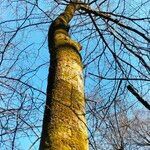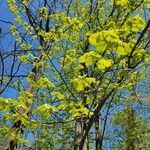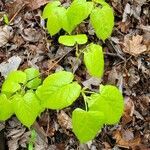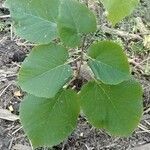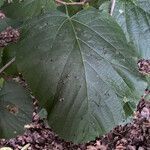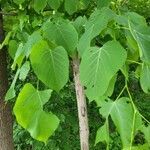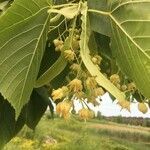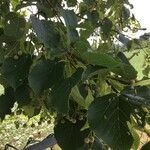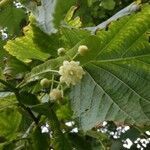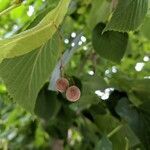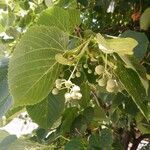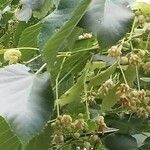Trees sometimes multitrunked. Leaf blades (on flowering shoots) 5–15(–20) × 5–12+ cm, abaxial surfaces initially glabrate but for tufts of simple, forked, or fascicled hairs at some vein axils, or initially densely to sparsely stellatehairy, then sometimes glabrescent, with or without tufts of simple, forked, or fascicled hairs at some vein axils, adaxial surfaces usually glabrous or glabrate. Inflorescences: bracts 7–15 cm, notably reticulate-veined, notably hairy, glabrescent, or glabrate; peduncle diverging from near or beyond midlength of bract. Pedicels weakly clavate, 4–15+ mm, notably hairy, glabrescent, or glabrate. Flowers: sepals 4–6(–9+) mm; petals 5–9(–11) mm; staminodes 4–7(–10) mm. Fruits ellipsoid to globose, 5–10 mm diam. 2n = 82.
A large tree which loses its leaves. It grows to 25-35 m tall. The trunk can be 100 cm across. The crown is rounded. The leaves are alternate and simple. They are 12-20 cm long by 15 cm across. It has a longer tip. The leaf is dull green above and lighter underneath. There are tufts of hair in the axils of the veins. The flowers are creamy yellow. They have a scent. They are 11-13 mm across. The fruit are 8-12 mm across. They are covered with brown hairs.
